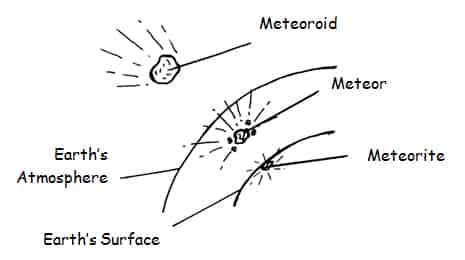– Since the universe is so incredibly large, astronomers (scientists who study space) are constantly discovering new objects in the universe.
– Even our solar system is incredibly large and contains countless objects.
PLANETS AND THEIR MOONS
– Planets are only some of the objects in our solar system.
– Most of the planets (6 out of 8) have satellites.
– A satellite is an object (natural or artificial) that revolves around a planet. Artificial satellites are sent into orbit by humans and are mostly used for telecommunications. Natural satellites are also known as “moons.”
– Jupiter has the most known moons (63 as of 2006) while Mercury and Venus have none.
– Our moon is the only object humans have stepped upon other than Earth. Astronauts visited the moon 6 different times between the years 1969 and 1972. These are known as the “Apollo missions.” Rocks brought back from the moon are still being analyzed today.
ASTEROIDS
– In between Mars and Jupiter there exists thousands of smaller objects known as “asteroids.” This area between Mars and Jupiter is known as the asteroid belt.
– Asteroids are small, rocky objects that revolve in an orbit around the Sun.
– The largest asteroid in the asteroid belt is named Ceres. Ceres is approximately 1000km in diameter and contains about 25% of all the material in the asteroid belt. Due to a decision made by astronomers during the summer of 2006, Ceres is now considered a “dwarf planet” along with Pluto and an object discovered past Pluto in 2003.
– Most asteroids have orbits that allow them to get close to certain planets. Astronomers continually monitor the orbits of asteroids and calculate how close they approach Earth.
METERORS AND METEORITES
– There is a lot of confusion between three terms that are very similar in definition: Meteor, Meteoroid, and Meteorite.
- Meteoroid – this is a small rocky object that enters the Earth’s atmosphere.
- Meteor – This is a meteoroid that burns up in the Earth’s atmosphere. People also call these objects “shooting stars” even though they have nothing to do with stars.
- Meteorite – This is a meteor that doesn’t completely burn up in the atmosphere and actually lands on the Earth’s surface. If the meteorite is large enough, it can cause great damage to the planet.
– A few times during the year, the Earth travels through sections of space where there many meteoroids exist. During those times (approximately mid-August and mid-December) meteors are easy to see on a clear night.
COMETS
– Comets also revolve around the Sun in fixed orbits.
– A comet is different than an asteroid or a meteoroid in that it is made up of mostly ice and dust and appear to have long “tails.”
– The front portion of a comet is called the “nucleus” and is usually only a few kilometers wide while a comet’s tail can be millions of kilometers long.
– As comets travel closer to the Sun, the ice begins to melt and evaporate (turn into a gas). It is these gases that form the long tail.
– Comets are usually named after their discoverers. Popular comets include Comet Hyakutake (last seen in 1996), Comet Hale–Bopp (last seen in 1997), and Halley’s Comet, which can be seen every 76 years. Halley’s Comet was last seen in 1986.
EXPLORING MINOR BODIES
– Smaller objects in the solar system, such as asteroids and comets, are known as “minor bodies.”
– Space probes are still being sent to these minor bodes to help humans understand more about the universe.

